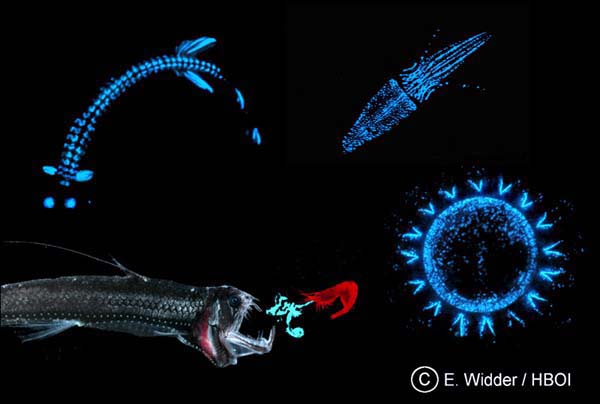Today in class we discuses light in the ocean. Areas where the light can reach are known as the photic zone, and can extend to as deep as 300 feet where the water is really clear and not turbid. The aphotic zone is the darker area where the light does not reach - and includes most of the ocean.
Turbidity is a measure of how clear the water is - and does not necessarily refer to dirt. Turbidity is often affected by tiny microscopic plankton that float in the water - this is the main reason why the North Atlantic Ocean is not clear.
We also discussed bio-lumi-nescence - the ability of organisms to make their own light. This can be used to attract prey, get mates, or to deter predators. Many of these creatures live in the deep sea and are ugly. We looked at some photos taken by Dr. Edie Widder of deep sea creatures and watched some videos. For more information and photos - click here.
Students finished class by working on a worksheet concerning upwelling in California. Upwelling is when cold water rises to the surface bringing up important nutrients.
Polar Vs NonPolar Covalent Bonds
-
Anyone who has ever had to share something with someone else knows that
sometimes isn't exactly even. Covalent molecules or bonds are no different.
If a ...
7 years ago




No comments:
Post a Comment